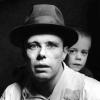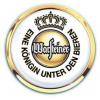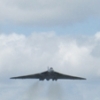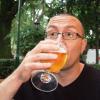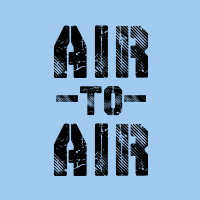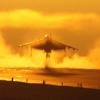Search the Community
Showing results for tags 'revell'.
-
Got this cheap off ebay a while back and recently completed it. Built mostly OOB with the addition of a pilot; sanded off 90% of panel lines for a smooth mockup model look and didnt bother with feathering the paint colours with each other. Displayed in flight mode (on temporary stand) as i didnt like the undercarriage legs. Mj
- 2 replies
-
- 6
-

-
- revell
- eurofighter
-
(and 3 more)
Tagged with:
-
Welcome to the lesson on how not to build the Revell Tornado. I've taken the plunge and started my first build thread, don't expect regular updates, because I don't have nearly enough time to devote to modelling as I'd like to But, I will endeavour to see this through to the end, this may result in a finished model or a pile of plastic lying at the bottom of the wall it's just been launched at. Any hoo, as the title suggest's here's what I'll be using, Closer look at the Flightpath set, Where I'm at to date It'll be converted to a GR4, and if I can find current pictures of a GR4 cockpit, will be bang up to date. Scratch building anything not included in the Flightpath set, at least until my talent runs out. As for the finished markings, I've not decided, But as I live not too far away from Lossiemouth, It will be one of the local Squadrons. 15sqn would be nice but I'd have to make the markings myself, or the easier route 617sqn, using the kit decals but incorperating any changes needed to make a Grey jet. Any encourgement and pointers gratefully recieved Thanks for looking Mike
- 36 replies
-
- Revell
- Flightpath
-
(and 3 more)
Tagged with:
-
There goes my Revell Tornado. I added Eduard photoetch for the cockpit, and I'll use Xtradecals RAF stencils and Model Alliance Saudi decals. It will carry eight 1,000lbs bombs on resin TSC made by xvtonker (thanks again John!). I decided I wouldn't try and correct the kit's accuracy issues (wise decision, that one, as you will see later on). So. Eduard photoetch is prepainted, and I consistently failed at reproducing its shade. I decided my effort would be close enough for government work. The bottom of the cockpit was painted dark green (I think I read there GR1s were painted that way, so I extrapolated a bit). The sides of the nose go nicely. My thumb did go nicely on the plastic precisely where some MEK had ran. Good one, Seb... The joint on the IP coming isn't that good. Revell Tornado is built a bit like a house : the floor, then the walls, and eventually the roof. The belly of the beast, with the walls installed: Some work to be done between the nose and the body: On both sides... No kidding, good one, Seb... If you see a red-haired Miami cop removing his sunglasses while looking like he really needs to go to the bathroom, shoot on sight... The pylon pivoting system. If you intend to make it work, widen the holes in the connecting part, or the fit will be too tight and it won't move. The wings are glued: Revell suggests you glue the airbrake housings to the back before glueing it in place. I found out the intake rear bulkhead got in the way and prevented a correct fit, so I filed off the front bit of the airbrake housings. Putty might be needed around the canopy... The fin is in place. BTW, I hadn't caught the joke in a signature there ("You ain't seen nothin' like the mighty fin") until I listened to the very excellent live album from Dan Baird & Homemade Sin, Electric. If you like rock'n'roll (the kind with smelly armpits), go for it. Back on topic: Once again, the fit could be better (and once again, it really could be may fault, don't blame Revell for my clumsiness). From the rear: Two .44 lead bullets went into the nose, which was glued on. The stabs are just in place on their supporting stubs. The intakes will need some work: And if you see a fat bearded Las Vegas cop looking a bit like the one who arrested Dr. Lektor in Manhunter, but 15 years and 54 lbs later, shoot on sight too. Now, please take the time to watch the following video. Two reasons: Dr Feelgood is a great live band. It perfectly describes what I had done earlier. When you put ballast in a nose cone, never ever use a blob of solvent based putty to maintain it in place. Ever. It is an extremely poor idea. Want a proof? Here you go: So I decided my Italeri Tornado would be a nose donor for that one. I tried the Ultimate sanding sticks I just received to make the new nose match to the fuselage. They work fine (and I'm quite happy with my buy). To be continued.
-
Germany’s only wartime heavy bomber, the He-177 Greif was also one of its most troublesome aircraft. To many it appears to have been a disaster, although closer investigation reveals a creative design, complicated by political interference. Development began in 1937 as a long range anti-shipping aircraft. The A-5 variant was first supplied to units in 1943. It was equipped with guided air-to-surface mis-siles, torpedoes and Rurhstahl/Kramer X-1 glide bombs known as the Fritz X. KG 40 was the hard-pressed anti-shipping unit, which dutifully did its best with the He 177. It was not until 1944 that KG 1 was able to put 80 plus He 177’s into the air to carpet bomb hitherto invulnerable, out of reach targets and the aircraft finally proved itself in its intended role. The Achilles heel was the Daimler engine which had a tendency to overheat and catch fire. This quickly earned the nickname Reichsfackel (or torch). The project was almost cancelled as the need for such an aircraft was unforeseen. KG 100 was formed on 29 November 1941 in Chartres by augmenting Kampfgruppe 100. Initially with two Gruppen, later four Gruppen. I./KG 100 was sent to the southern sector of the Eastern Front in 1942 and also operated the southern Eastern Front in 1943. After a switch between I./KG 100 and I./KG 4, the “new” I./KG 100 served on the Channel Front again, flying missions against England in 1943 and 1944 before it was removed from the Geschwader end of May 1944 and became III./KG 1. In December 1941, III./KG 26 became II./KG 100, and served in the middle sector of the Eastern Front in early 1942 and moved to Greece at the end of April 1942 until April 1943. III./KG 100 was formed in September 1942 from the former Aufklärungsgruppe (See) 126 . It served in Greece in 1942 and early 1943.After the original II. Gruppe and III. Gruppe had left Greece, they were reformed from scratch in Germany. Eventually they were moved back to the Mediterranean theater of operations in July 1943. In 1944, both groups remained in the Mediterranean until September 1944. The unit was disbanded on 20 August 1944, after having specialized on guided anti-ship weapons, which included the aforementioned Fritz-X MCLOS-guided PGM ordnance and the similarly controlled Henschel Hs 293 powered guided missile. He 177A-5, 6N+HM, 4./Kg100, Chateaudun, IX Fliegerkorps 21/1/1944-1/5/1944.
- 10 replies
-
- 19
-

-
Well, being a newbie, what better than to join a groupbuild? And one with French subjects too. My stash had quite a few Heller classics, but unfortunately those are already built. So after some stash searching I came up with this one. A nice and simple build: the Revell Thunderbolt OOB. This kit was given to me by my son, who found it in a charity shop. The box is a bit tattered, but the sprues are all there. And it has French markings included. So, out of the stash, and into the group build. The usual picture: box and sprues. Nice details, finely engraved panel lines. And knowing the more recent offerings from Revell, building it should be trouble free. So... Allons-y!
-
Fellow modelers, may I present my tribute build to Merv. (This is also on display in the Tornado GB) Tornado GR1 ZA465 FK (Foxy Killer) 16 Sqn RAF Tabuk Detachment 1991. It is the 1/144 Revell kit with JP 233s & Gulf war decals. All brush painted using Humbrol enamels & weathered with Flory wash & Mig pigments. Comments welcomed please.
-
Hi all, My entry for this Group Build is going to be the Revell boxing of the excellent Hasegawa F4U-7 Corsair in 1/48 scale. These aircraft were used extensively by the Aeronavale during this bitter conflict and were operated from both shore bases and carrier decks, their good range and ability to carry a large amount of just about anything you could possibly want to drop on or fire at people making them very popular (with the French at least, probably less so the Algerians). Here are the usual "kit in bits" shots. Striking box art of the usual Suez marked aircraft. The contents and decals sheet laid out. A closer shot of the excellent Revell decal sheet. And now a couple of shots of the real thing to give some idea of the finish I am going to try and achieve, and to prove that they were also shore based, and very, very dirty! I hope that this choice of topic meets with the approval of the other group builders (there are some great topics on the go already). Any help and advice (and criticism) is always welcome. Thanks for looking. Craig.
- 41 replies
-
- 7
-

-
As in between job, two models I made just to relax. Some easy builds. The airfix hawk and the revell thunderbolt in Turkish service. Both were easy builds. Decals were from Tigerhead decals. I just wanted to do something different, and these decals were just right. Both models are clean builds, so no weathering. I was just afraid to ruin the look... Tigerhead decals were used on both planes. I was impressed with the quality: the decals went on perfectly. And the great thing is that the decals include complete markings for several planes... so I have to build some more hawks and thunderbolts! the schemes included in the sheet are great! Pictures: Hawk the p-47:
-
Here is my F-4F Phantom II in 1/72. Aircraft 37+03, special painting for 50th anniversary of JG 71 in 2009. Model made few years ago with Revell 04685 kit and Eduard`s PE parts. Decals modified by myself (Revell`s decals were made for aircraft with unfinished painting!).
- 16 replies
-
- 24
-

-
Good afternoon everyone! First of all something needs clearing up, the vulcan build will not be proceding in the immediate future due to my realisation that I had made the whole thing wrong, I won't go into detail but I will consider that practice for scratchbuilding :| Anyway, let us begin on this build! I came across this large kit at the Cosford model show, only a few days ago, and as it happens I had purchased a book on the Tupolev Tu-22 "Blinder" as I am very interested in "the other side's" technology and aircraft. While the Tu22 may not have been the most prolific aircraft in the Soviet arsenal-due to the high landing speed and relative obscelence after the development of the Tu22M. So what do I plan to do with this kit? Well, I would like to have one side as a standard "out of the box build" with the other half containing pieces that have been cut away to reveal sections of the engine/payload bay/cockpits and nose section. The key feature that I would love to implement is the downward-firing ejection seats that would be wound up into the cockpits before taking off. I am always open to any suggestions and tips that anyone wants to incorporate into the build and will do my best to try and do this with a decent level of quality although I will apologise if I don't do particular features of this aircraft-I model for my own enjoyment, I am sure you all understand. Alas! Some photos shall follow: The box The book... The downward firing ejector seats-not suited to low level operations More to come! Sam
-
Hi everyone! I have decided to try my luck in building my first WWII aircraft! The unlucky kit chosen for this ordeal will be the Revell 1/48 Mosquito, I will try some new things like camouflage painting for example. It´s one more step for me in this hobby! So, I will leave the first pictures of this build! Thanks for looking, iuri
-
Hello all My latest completed build - Revell's 1/48 A-10 Thunderbolt. This was a Christmas gift, so just went at this one straight out of the box and with even less attention to accuracy and detail than usual, so anyone with a particular love of / interest in this aircraft might want to look away now... Not one of my favourite builds, but I think it's turned out ok (it even survived a 9ft fall to the floor from the shelf of doom!). For me the best thing about the kit was the decals, which conformed beautifully to the curves and plentiful raised detail on this beast. Painted with Tamiya acrylics, weathered with Flory Models' dark dirt wash, and finished with a flat coat of Vallejo Matte Medium. Thanks for looking. Cheers Adam
- 17 replies
-
- 18
-

-
Hello All, Here's a Revell Sea Hurricane that sort of fell together on the bench whilst I was trying to finish the Airfix Blenheim. I pushed the cockpit insert a bit further forward (should have done more) to reproduce the part that goes under the canopy, replaced the seat belts with wine bottle foil and replaced the canopy with a home-made vacform left over from a build of the ancient Airfix IVRP. There is a minuscule lump of plastic to represent a (too small?) rear view mirror perched on top of it. I also extended the arrester hook so it would actually work, and added the wire holder on the aerial and the light on the spine of the fuselage. I made some new landing light covers out of the plastic sheet that comes with new shirt collars.I actually dunked the plastic into my tea wrapping it round the leading edge of the wing to shape it. The tea is just about hot enough set the plastic - saved me a trip downstairs to the cooker! Paints are acrylic: Revell 79 and Humbrol 224 above and Humbrol 90 below. I wanted to try out a lighter look, as Humbrol 79 and Revell 67 looked quite dark. The wingtip, ID and tail lights I faked up with dark and light grey and a touch of bulb colour. Sorry about the pictures. I was going to take some outside this morning but there's a fine mist of rain. It's a Summer weekend in the UK... Thanks for looking, Adrian
- 20 replies
-
- 38
-

-
- Revell
- Sea Hurricane
-
(and 1 more)
Tagged with:
-
Hello and welcome to my build of Revell's 1/72 Tornado Black Panther. This is a German Luftwaffe Panavia Tornado IDS with Black Panther markings for the 2011 NATO Tiger Meet. This is my second wip on Britmodeller.com and once again I look forward to your input. The kit contain two bags of black and clear sprues. Instructions. Decal sheet. Revell's recommended paints. The aftermarket. In accordance with my personal preference, this model will be displayed in-flight. I will need to source some aircrew in due course. Let's take a closer look at the resin cockpit. Photo etch and film. Cockpit tub. Ejection seats. There's some nice detail there. Instrument panels. Control stick. Well that's it until I make a start on it. Can't promise rapid progress as I like to take my time with these things and I am working on my F-4 8sq Black Panthers at the same time. In addition, I would like to produce something special to honour Merv. I never had the pleasure of making his acquaintance but it is evident from the tributes of those that did that he was someone you would be happy to count among your friends.
-
My next build is Revell's 1/72 B-17f, being built as 'Memphis Belle'. Woody37 did a great review of the kit here on BM (thanks Neil!) and that has some great sprue shots so please refer to that. My only sprue shot will be this: Still in the plastic bags. Perhaps a little intimidating but my last two (big) builds have been Valom short-run kits so I'm expecting Revell's German engineering and 'efficient' instructions (ve vill give ze orders!) to give me a bit of a rest (famous last words). Most people (including me when I bought it some time ago) consider this to be a big model, but my recent experiences have warped my perception somewhat - it's not big, it's just, er, close. Here's the B17 wing compared to my recently completed Bombay: So 'standard size' then. And it has locator pins and everything! I'm a bit concerned by the number of 'Marie Celeste' builds out there that start well but then just fizzle out. I shall, however, be ruthlessly plagiarising tips and warnings from: - robbo1234biking's part build WiP in June 2009 - Rickpadwick1801's completed build in May 2014 and - Andy Moore's current WiP - although it's a 'G' they share a lot of parts (naughty things) And of course I'll be trying to replicate Fozzy's interior from his amazing scratch build: Just kidding, of course, I won't be trying to do that, it's a 'G' too! And, of course, well beyond my relatively Newbie skills. So, I've read the threads, watched the film (last night) and done some 'research' on BM and the internet. I hope this WiP will be as 'educational and entertaining' as my last couple so, to quote 'Buffalo Joe', "Hold onto your hats boys!"**. And girls, obviously. And others. It's time to wash my parts, and then I'll rinse the sprues and get started*. * Dbl-E, score 1, fnaar fnaar ** If you haven't watched 'Ice Pilots' I recommend it. It's on YouTube and here's the Season 1 trailer. Six series to watch - go on, you know you want to!
- 381 replies
-
- 12
-

-
Having returned to modelling (that auto-corrected as meddling, probably more apt) after a really long break I bought this some time ago and held it in the stash, remembering it as a 'special' model that needed me to hone my skills before starting. I was not wrong. I started it with some trepidation after seeing several stalled builds on BM and I now understand why; Revell have obviously used the same molds for the 'F' and 'G' variants and this, IMHO, causes more problems than it's worth, especially as they have forgotten to amend the instructions in some places. Anyway, enough of my moaning, there's enough of that in the WiP. I present for your pleasure the 'Memphis Belle'. Built OOB except for some scratched ammunition belts for the waist guns (not up to Fozzy standards) this was a challenging kit and I'm only reasonably happy with the results. And some shots of the interior, for those of you who missed the WiP; Mixed feelings as you can probably tell. I may build another B17, just not the Revell one. Thanks for looking.
- 26 replies
-
- 29
-

-
Here is my attempt at building a model of the wonderful Sally-B. The WIP can be found here. My aim was to take photo of the model using the same focal length that the following picture was taken with & then to photoshop the model onto this picture. here is the model sat on a table with a fan heater blowing the props.... And here is the final image hacked about using paintshop pro: And just for good measure, here are a few pics of the finished model. Most of the detail is on the inside & can be seen in the WIP. No clever tricks to hide the blemishes... I know she's a mess in places, but she'll look just fine hanging from the ceiling of my 'office'. thanks for looking
- 14 replies
-
- 19
-

-
Focke Wulf Fw-190F8 Revell 1:32 The Focke-Wulf Fw 190 Würger (English: Shrike) is a German single-seat, single-engine fighter aircraft designed by Kurt Tank in the late 1930s and widely used during World War II. Along with its well-known counterpart, the Messerschmitt Bf 109, the Fw 190 became the backbone of the Luftwaffe's Jagdwaffe (Fighter Force). The twin-row BMW 801 radial engine that powered most operational versions enabled the Fw 190 to lift larger loads than the Bf 109, allowing its use as a day fighter, fighter-bomber, ground-attack aircraft and, to a lesser degree, night fighter. The Fw 190A started flying operationally over France in August 1941, and quickly proved superior in all but turn radius to the Royal Air Force's main front-line fighter, the Spitfire Mk. V, especially at low and medium altitudes. The 190 maintained superiority over Allied fighters until the introduction of the improved Spitfire Mk. IX in July 1942. In November/December 1942, the Fw 190 made its air combat debut on the Eastern Front, finding much success in the specialised ground attack units called Schlachtgeschwader (Battle Wings or Strike Wings) from October 1943 onwards, following the redesignation of all former Sturzkampfgeschwader dive-bomber wings at that time. Though Soviet pilots considered the Bf 109 the greater threat, the Fw 190 and its pilots proved just as capable as the "lean" (to VVS pilots) inverted V-12 inline-powered Messerschmitt in aerial combat. In the opinion of German pilots who flew both, the Fw 190 provided increased firepower and manoeuvrability at low to medium altitude. Still, it never entirely replaced the Bf 109. The Fw 190A series' performance decreased at high altitudes (usually 6,000 m (20,000 ft) and above), which reduced its effectiveness as a high-altitude interceptor, but this problem was mostly rectified in later models, particularly in the Junkers Jumo 213 inline-engine Focke-Wulf Fw 190D series, which was introduced in September 1944 and restored relative parity with Allied opponents. The subject of this kit is that of the F8 variant which was basically an A-8 model re-designated, having a slightly modified injector on the compressor which allowed for increased performance at lower altitudes for several minutes. Armament of the Fw 190 F-8 was two 20 mm MG 151/20 cannon in the wing roots and two 13 mm (.51 in) MG 131 machine guns above the engine. Fw 190 F-8/U1 - long range JaBo, fitted with underwing V.Mtt-Schloß shackles to hold two 300 L (80 US gal) fuel tanks. ETC 503 bomb racks were also fitted, allowing the Fw 190 F-8/U1 to carry one SC 250 bomb under each wing and one SC 250 bomb on the centreline. Fw 190 F-8/U2 - torpedo bomber was fitted with an ETC 503 bomb rack under each wing and a centre-line mounted ETC 504. The U2 was also equipped with the TSA 2 A weapons sighting system that improved the U2's ability to attack seaborne targets with a 700 kg (1,500 lb) BT 700. Fw 190 F-8/U3 - heavy torpedo bomber was outfitted with an ETC 502, which allowed it to carry one BT-1400 heavy torpedo (1,400 kg (3,100 lb)). Owing to the size of the torpedo, the U3's tail gear needed to be lengthened. The U3 also was fitted with the 2,000 PS BMW 801S engine, and the tail from the Ta 152. Fw 190 F-8/U4 - created as a night fighter, was equipped with flame dampers on the exhaust and various electrical systems such as the FuG 101 radio altimeter, the PKS 12 automatic pilot, and the TSA 2 A sighting system. Weapons fitted ranged from torpedoes to bombs, however, the U4 was fitted with only two MG 151/20 cannon as fixed armament. The Model This completely new moulding came as bit of a surprise, but very welcome none the less. The quite large, and unfortunately end opening box is pretty much full of styrene. Each of the eight blue-grey sprues are very nicely moulded, with little or no sign of flash and not too many moulding pips, although some of the them and the sprue gates are quite large. There are quite a few flow marks visible on a lot of the parts, but these shouldn’t cause too many problems under a coat of primer. Details are finely produced with neat panel lines and other fixtures and fittings. Throughout the kit there are lots of details, particularly the engine and cockpit, which means it can be made pretty much out of the box with perhaps the exception of some replacement seatbelts. Construction starts with the modeller having to decide which version of the two provided that they wish to make. Since each version requires having different hole opened up from the inside of the lower wing depending on whether the single SC500 centreline bomb and two wing drop tanks or the single SC250 on the centreline and the two pairs of SC50s are going to be fitted. There are also two larger holes that require to be opened up should you wish to use the large stand that is provided in the kit. Actual assembly begins in the single piece cockpit tub with the fitting of the joystick, rudder bar and footplates. These are followed by the lower instrument panel, seat, with separate squab, plus the decal lap and shoulder straps. The main instrument panel is then fitted with the revi gunsight and its two clear screens the gunsight is then carefully slid thought the gap in the coaming and the panel glued into place. For the instruments on the upper and lower panels Revell have provided a some nicely printed decals, but in this scale it may be better to use some separate instruments and bezels from the likes of Airscale. At this point, several sub-assemblies are constructed. These include the forward upper gun mounting deck consisting of two parts, the tailwheel is made up of two halves for the tyres plus the inner and outer hubs, which is then slid onto the axle of the oleo and enclosed with the port side of the mounting yoke. Once the insides of the fuselage have been painted there are a couple of parts fitted to the fuselage sides, before the instrument panel/coaming are glued to one half, as is the tail wheel, (in either retracted or extended position), before the fuselage can be closed up. The completed cockpit assembly is then fitted from beneath and the forward gun mount fitted just in front of the coaming. Moving onto the wings the two inboard cannon barrels are attached tot eh main wing spar along with the centre section of the main undercarriage bay. The assembly is then glued into position, with the spar aft of the main wheel bays. Behind the main spar there is another plate which moulded with the two rear spars, whilst the main wheel bays are fitted ahead of the main spar, covering the openings. The two ammunition canisters for the upper machine guns are then fitted to the main spar panel, along with the engine bearers and the engine mounting ring before the whole assembly is attached to the underside of the fuselage. The two part ailerons are then assembled and fitted to the upper wing panels, which are then attached to the lower panel. The optionally positioned flaps are then fitted. Each of the horizontal stabilisers, elevators and rudder are made up of two halves, which when all assembled are glued into position. Probably the most complex assembly of the kit has to be the engine. Each of the two banks of cylinders is made up of two parts, but where the moulding differs here is that the cylinder heads are moulded complete and the rest of the cylinders are on a smaller inner section, thus elevating any awkward seams to worry about. With the banks assembled the two sets of push rods are attached and the banks joined together via a spacer ring. The inlet manifold is then fitted from the rear, followed the exhaust manifolds, the prop shaft and the auxiliary gear box. The completed engine is then attached to the previously assembled engine mount, followed by the two small lower panels and the front cowling ring. The main undercarriage units each consist of the main oleo, with separate scissor link, five part wheels, (two tyre halves, inner and outer hubs and outer cap), and the undercarriage door. The undercarriage assemblies are then glued into position, followed by the retraction jacks. If the undercarriage is to be posed retracted then there are separate wheel parts to be used. With the undercarriage attached, the kit is turned over and the windscreen is fitted followed by the upper and lower cowling covers, again with optional parts for them to be posed open or closed. On the upper decking the machine gun breeches and barrels are fitted and the area is finished off with the cowling side panels and the large machine gun panel. The kit comes with optional canopies, early and late, (flat and bulged), with slightly different parts for the interiors. With these fitted then the turn of the multitude of aerials access step and pitot probe to be fitted. Depending on which type the modeller is building there are variations on the pylons and weapons fit to be attached. Each drop tank and weapon comes in two halves, with the bombs having extra struts for around the tail fins. Each pylon is fitted with separate sway braces and attached to the holes that were opened up at the beginning. Finally the propeller consists of a single piece three bladed prop, back plate, spinner and cooling fan. If the stand is to be used, this is assembled from four parts which are then inserted into the large circular base. Decals The decal sheet appears to have been designed by Revell and printed in Italy so presumably by Cartograph, although they feel quite thick and not up to their usual standard. They are well printed though, in good register and nicely opaque with very little carrier film except in each of the outline crosses. The decals are quite matt in appearance but should settle down well with the appropriate solutions. A full set of stencils are provide which will make a lot of modellers happy, but as is the ruling over in Germany there are no swastikas included. There two marking options provided:- Fw-190F-8/R1 ,”Black 6”, St.SG.10, Czech Territory. 1945 Fw-190F-8 “Black 2”, St.SG.10. Czech Territory 1945 Conclusion As with their 1:32 Me-109s, Revell should be very proud of this kit. Not only is it highly detailed, but the mouldings are superb as well. From what I’ve seen the price has increased quite a bit, but it is still worth it as there is a lot modelling to had from the box. Of course, Eduard have already started releasing add-on sets for this kit so if you want to guild the lily then you can. Very highly recommended. Revell model kits are available from all good toy and model retailers. For further information visit
-
Well over the weekend I finally put all my enamels (100+!) into a big tin in the garage. That tin will be making an appearance on Ebay shortly... I have just topped up my acrylics collection with some purchases from Hamleys (pretty much the only model supplier in central London). And when I say "topped up" I mean trebled... I use Humbrol with some Revell and Games Workshop paints, and I have a load. So I needed to work out what I've got, painted on my Airfix Ju88 and phtographed in decidedly non-sunny daylight: Hxxx is Humbrol, Rxxx is Revell and (xxx) is the RLM number. The first thing I noted is how different some of the acrylic colours are from the enamels - for instance H66 is more grey than olive, and H117 is much darker than its equivalent enamel - I presume this is by design. H154, which is a superb deep yellow enamel, is a sticky barely translucent mess (inboard end of port aileron) whereas H24 covers pretty well in a couple of coats - quality control problem? The new tins with the screw top lids seem to offer a consistent quality - the old pots with the flip top lids are almost always half full of over thick paint, and I refuse to buy them any more (I am hoping there will be new stock in the new pots). White is always a problem, but I am now using either Games Workshop or "Crafters Pick" white acrylics, which seem to cover much better. My "go to" DG/DE/Sky (inboard port wing) is H116/H29/H90. Revell offer R68/R82 for green and brown, which seems too bright but maybe I'm not used to it. For DG/OG/MSG I use H116/H106/H64. R79 might make a better Ocean Grey because it's bluer. Desert stone/earth seems to be nicely covered by H225/H29. For Azure Blue I used a mix of 6 H34 white to 1 H24 blue in enamel land... For TSS EDSG/Dark Slate Grey (inboard stbd wing) I think H79/R67 looks good - previously I've been mixing my own Dark Slate Grey. For the lighter shades, H27/H224 seems to hit the spot, R79 looking a little too blue. For US OD/Grey I guess H155 is my best option, H66 and H86 (which I used to use in enamels) don't look right. For the Grey I used a mix of H24 white and H27 Dark Sea Grey in enamel land. For US navy I think H104 with H79 would work over white. For RLM 70/71/65 I will use H241/H242/H65, although the contrast between 70 and 71 is very low - maybe I need a touch of black in the 70? I think the modern trend is to have a higher contrast between 70 and 71 than is realistic, although I don't know how they weather relative to each other. RLM 72 and 73 look like great colours and it might be the perfect excuse to crack open the Airfix Arado 196 to try them out! H150 is not available as an acrylic so I will have to re-think my early war Soviet colour schemes, and I have still to try and work out how to apply these colours to Italian WWII colours. Now that I can see them all in one place, I can mix and match. The port tailplane is done in H241/H117/H249 and seems to be a good match for US in Vietnam colours! Hope this is helpful to someone. I know a lot of you use Vallejo or other brands but I tend to stick to the devil I know!! Regards, Adrian
-
German Dingo 2 GE A3.3 Patsi Revell 1:35 Since its introduction in 2000 the Dingo Armoured Personnel Carrier (APC) has developed into a true all-rounder within the Bundeswehr. Both Dingo 1 and 2 provide an ideal combination of protection, cross-country mobility and speed. The ATF Dingo 2 GE A3.3 Patsi version has been used in Afghanistan since 2012 as a reconnaissance and security vehicle. The 6 occupants enjoy a maximum of protection thanks to excellent land-mine protection afforded by the V-shaped deflector under the safe cell. For self-protection, the Dingo is normally equipped with a type FLW 200 weapon platform which can be optionally fitted with a .50 calibre (12.7 mm) machine gun or an automatic 40 mm grenade launcher. Technical improvements over its predecessors include amongst other items optimization of crew protection, a hard-top over the cargo platform and IR driving lights to improve night vision capability. The Model Originally released in 2013 in the vehicles A2 form, this kit has new parts added to upgrade it to the A3.3 variant. Contained in one of their controversial end opening boxes are eight sprues of green styrene, plus two clear sprues, four vinyl tyres and a length of wire. The parts are very clean and nicely moulded with no sign of flash, but with quite a few moulding pips and rather awkward moulding points, particularly between the window openings. A lot of the larger parts have prominent flow lines, which whilst a little annoying shouldn’t cause too many problems under a coat of primer. There are also quite a few very slight sink marks on parts like the chassis rails but are worse on the rear view mirrors and more annoyingly on both sides of the vehicle sides between the doors. There are a lot of imperfections from where the ejector pins have been rather enthusiastic. Although they haven’t punched through these marks are slightly visible on the outside of parts. Like the flow lines, these should disappear under a coat of primer and paint, just be aware of them. The build begins with the construction of the chassis. This consists of two longitudinal rails, to which the front mud guards, rear air accumulators, front shock absorbers are fitted before the two rails are joined together by six cross members, the transfer gearbox assembly and power take off box. There is a rudimentary engine included in the kit consisting of jut two parts, but since you won’t see much, if any of it, it’s really just so that the drive shafts have somewhere to fit. Witht eh chassis assembled it is then fitted out with accessory boxes, exhaust silencer, front bumper beam, rear bumper, complete with towing eyes, lights, tow hook, and cover plate. Moving onto the drive train, the four wheels are assembled, each from a vinyl tyre plus inner and outer hubs before being put to one side. The axles are each made up of a single axle part, to which the brake discs are fitted. The front axle also has the steering rack and ball joints attached. Both axles are then each fitted with a two part drive shaft casing and their respective support arms. Before the axles can be fitted to the chassis, the suspension springs, airlines and front skid plate need to be added. Followed by the anti roll links, engine assembly and exhaust pipe. The kit comes with a nicely presented and pretty full interior which begins with the fitting of the front foot wells into the single piece floor pan, along with cross compartment mounting rails. The centre console is assembled form two side pieces and two sections, which look like comms/control units. The instrument binnacle is fitted with the decals instruments, foot pedals, steering column, steering wheels and passenger side console. Other sub-assemblies include the six two part seats, the three part radio set, storage shelve unit, two part IR/TV console and controller for the roof mounted machine gun. Once assembled these are then glued into their respective positions. It should be noted that the headrest of the rear centre seat needs to be removed as there is already one on the rear bulkhead. Moving the outside of the vehicle the front valance is fitted with the clear windscreen, windscreen surround and the three wipers. Inside the sun visors and compass are attached to the top of the frame whilst a map display unit, complete with decal is fitted to the bottom of the frame on the right hand side. Each of the four doors are moulded as a single piece, onto which the door cards and thick clear parts, (obviously attempting to represent armoured glass), are fitted, along with the door handles. The completed doors are then fitted to the body and can be posed open if required. The two sill plates are then fitted with two footsteps and glued into position under the door frames. Also fitted to the underside of the floor pan are two storage boxes, and the wheel arches for the four wheels. Meanwhile, the underside of the roof is fitted with an air conditioning, overhead control box and gun mounting display. The front valance, hull sides, rear bulkhead and roof are all joined together to make the complete armoured box that is the crew compartment. The roof is then fitted with a crew hatch, GPS antenna and aerial mounting plate. Unusually for a four wheeled vehicle this one has a separate compartment fitted behind the main crew compartment. This is made up of a lower section which is fitted with the rear mudflaps, lights and storage racks. To this the sides, rear, and roof are attached, followed by the two rear access doors complete with their handles. The crew and storage compartments are then attached to the chassis followed by the bonnet, bonnet sides and grille. The main machine gun mount is quite a complex affair in that it is constructed from five parts, onto which a further six parts that include the sight, and spent cartridge bag are attached. The modeller then has a choice of which weapon to fit to the mount. You have a choice of either a Browning 50 cal with its associated ammunition box or a 40mm automatic grenade launcher and its associated ammunition guide. The completed unit os then fitted to the top of the crew compartment roof via a mounting ring. The model is completed with the fitting of the two pairs for rear view mirrors, tow bar, and a pair of aerial mounts to the roof of the storage compartment. The aerials can be made up using the metal wire provided. Decals Along with the instrument and screen decals mentioned above, the decal sheet includes several placards for inside the cabin, German crosses and unit shields for the hull, plus two pairs of completed number plates. As an added option for those modellers who wish to build a particular vehicle a pair of blank number plates are also included along with a whole selection of separate numbers to finish them off. The decals are well printed in Italy, so presumably by Cartograf. They are in register with good colour density and no bleeding between colours. Three vehicle options are provided in the kit and these are for:- Dingo A3.3 of the Bundeswehr ISAF, Afghanistan 2012 Dingo A3.3 of the Bundeswehr ISAF, Afghanistan 2013 Dingo A3.3 of the Bundeswehr, 2015 Conclusion Whilst I’m not overly enamoured with the green styrene used in this kit there is a lot of detail provided that will make up into a good looking model. Shame about some of the imperfections and sink marks on some of the parts, but these shouldn’t cause too many problems to the seasoned modeller. There seem to be a number of vehicles from different countries that appear to be following a similar format, but they’re still an interesting vehicle to have in any collection. Recommended. Revell model kits are available from all good toy and model retailers. For further information visit
-
I thought I'd better get started as I will be attempting to complete 2 models in the course of this GB and only tectonic plates move more slowly than my production line. I will be making another one of my beloved RAF Leuchars aircraft in the form of the Fujimi FG1 'Treble 1' edition with the actual markings still to be decided and I will also be trying something new to me in the form of the Revell F-4F (which will also be my contribution to a GB that the Aberdeen Modellers Society are currently running). The F-4F kit has some fancy markings for an aircraft wearing 40 year anniversary markings and is in a fetching red and black scheme. Unfortunately Photobucket is playing hard to get for me at the moment so the box top, sprue shots and construction photos will have to wait but trust me I am actually starting from scratch. I started painting the interiors last night and was surprised to see the difference in size of the cockpit consoles from each kit. The usual injection pin holes were filled with superglue on the Fujimi kit but this particular kit does not seem to have suffered as badly from sink marks as the last Fujimi Phantom that I built (I did have a look through my Fujimi stash during the build of my last one and noticed that the sink marks were quite randomly distributed through the various kits, date of issue didn't seem to come into it). The Revell kit has some sink marks on the stabilators and outer wing panels but the rest of the kit seems ok, talking of the outer wings and stabs is it my imagination or are the Revell parts smaller than the Fujimi ones, I'll have to compare them against each other? I'm looking forward to seeing how the Revell kit goes together, at least it'll take my mind off the Fujimi build which I find tedious for some reason! I think it's the intake joints and forward undercarriage bay fit that I find a chore to deal with on that kit (and also having to extend the missing panel lines on the heat shields too). Hopefully Photobucket will play nicely and I can start posting photos soon. Duncan B
-
Harrier GR.7 - ZG474 / 64, 1(F) Squadron, RAF, Exercise Snow Falcon 1, January 2004. 1/48th scale Harrier #24 rolls off my production line. This time it's a GR.7 in the RAF's Arctic camouflage scheme of white over the standard dark sea grey / dark camouflage grey scheme. The jet represented, ZG474, is one of those that participated in Exercise "Snow Falcon 1" at Bardufoss, Norway in January 2004. This was a deployment by 1(F) Squadron, with IV(AC) Squadron taking part in Snow Falcon 2. ZG474 first flew on 28 July 1990 and saw combat service on Operation Wadren in 1993. She was upgraded to a GR9 in July 2006 and withdrawn from service on 1 November 2010. She was one of the jets sold to the US in 2011. In her time, she has served with 1(F), 3(F), IV(AC) and 20® squadrons. Having recently completed a GR3 in the Arctic scheme, I decided I would do the same for a second generation Harrier, giving me the option of a GR.5 and a GR.7. The GR.5 became the Rough Ground Trials build, so it had to be a GR.7 and the two greys. There's an Airfix 1/72nd scale kit that has this aircraft in this scheme, but for some reason gives it the tail (build) number 68 instead of 64. Whilst some tails have been swapped, I've seen no photographs to support the Airfix decals in this instance and all point to the correct 64. Aside from the scheme, it's a pretty standard GR.7 build, with the addition of a resin MB Mk.12 ejection seat, resin replacement nose wheel doors (the kit has them moulded in place) and some Maverick missiles from donated spares. I approached the painting as follows. Unlike earlier deployments, the white looks to be sprayed on the real aircraft rather than brush painted. I toyed with the idea of using a rattle can, but ultimately went for an all brushed finish. The aircraft was primed all over with Halfords acrylic white primer. I then used a pencil to draw the Arctic scheme pattern on the aircraft and rough-striped the grey areas so that I could now reinforce the white primer with Vallejo Model Color White as a top coat (a couple of coats required) and not keep referring to photos whilst doing so. I then masked the white edges using 3M Scotch Invisible Tape cut to shape and also added the masking to delineate the Humbrol Dark Sea Grey and Dark Camouflage Grey enamels. I painted the dark sea grey and then masked that and the white in a similar fashion to do the dark camouflage grey. The three paints were then used as necessary to touch up any dodgy areas (the whole lot I hear some wag cry). Other colours included Life Color Black, Gun Metal, Silver and Light Compass Ghost Grey (FS36375) for the Mavericks and CATR, Precision Paints Tyre Black and Dark Sea Green and Humbrol Ochre. A few coats of Humbrol Clear were used in preparation for decals, which were from a mixture of sources from previous kits and third-party sheets. I did the markings for the Mavericks, CATR and wing-tip slime lights on an inkjet printer. Another coat of Clear then sealed the decals before I used Tamiya weathering powders to dirty her up, sometimes combined with Humbrol Decalfix. I sealed this with Humbrol acrylic matt spray and then a final coat of Vallejo matt varnish. Think that's about it. If you think her back-end looks dirty for a short deployment then you're right, it is, but then again, that's what the photos show - so she must have had a engine that liked chucking out soot! Here she is ... All my Harriers can be seen here .... http://p1127.co.uk/Harrier/HarrierModels/index.html Comments welcome as ever.
- 11 replies
-
- 16
-

-
Bell AH-1W SuperCobra Revell 1:48 Most modellers will instantly recognise the Bell AH-1 Cobra Attack Helicopter. The AH-1 was the first production Gunship or Attack Helicopter to see service. During the Vietnam war the US Army began to see the need for armed helicopter to escort its unarmed UH-1 Hueys into combat. In parallel to this Bell Helicopters had been investigating helicopter gunships as early as the late 1950s. In 1962 Bell displayed a mock up concept to the US Army. This Helicopter featured a 20mm gun pod, and a ball turret mounted grenade launcher. It was felt by the Army to be lightweight, under powered and not suitable. Following this the US Army launched and Advanced Aerial Fire Support System (AAFSS) competition. This competition gave rise to the Lockheed AH-56 Cheyenne heavy attack helicopter. However this proved to be to advanced for its time and was eventually cancelled in 1972 after 10 years of development (some things dont change!) Despite the AAFSS programme Bell stuck with its idea of a smaller, lighter gunship and invested its own money developing the AH-1. They used all of the proven components they could from the UH-1 platform, adding these to a newly designed fuselage. When The US Army therefore asked for pans for an interim gunship for Vietnam Bell was in a fortunate position to be able to offer the AH-1, or the Bell 209 as it was then called. Given the work Bell had already done the programme was completed in a relatively speed eight months and won the evaluation against the competition. In 1966 the US Army signed an initial contract for 110 aircraft. Some slight modifications were made to the production airframes. The heavy armoured glass canopy was replaced by Plexiglas with an improvement in performance. Wider rotor blades were fitted and the original retracting skids were replaced by simple fixed units. The rest is history as they say. The AH-1 went on to serve the US Army until it was replaced by the AH-64 Apache. The last one leaving active service in 1999. The US Marine Corps opted for a twin engine AH-1 to replace its original Cobras and thus the SuperCobra was born. The AH-1W would keep its twin rotor. The original engine would be replace by a pair of GE T700-401 turboshafts. These give the AH-1W a maximum speed of 190 Knots with a range of 365 miles. Armament is one 3 barrelled 20mm gattling gun in a chin turret with provision for 2.72" & 5" rockets, TOW missiles, Hellfire missile and AIM-9 sidewinder missiles for an air-2-air capability. The USMC continues to believe in the SuperCobra for its use with them being updated to the AH-1Z. This features integrated digital avionics, helmet mounted displays. A four bladed main rotor which is bearingless and features composite technology will be a main noticeable change. The Cobra lives on! The Kit This kit is a re-box by Revel of the 1993 Italeri kit with new decals. The it arrives on two main sprues with a small clear spure. Detail is sparse and mainly raised. Construction starts in the cockpit. The clear part for the HUD Is added to the pilots console. This along with the two seats and a rear bulkhead are added to the cockpit tub. Also added are the pilots control column & cyclic control to the read cockpit. To the gunners cockpit at the front are added a pair of control levers. Once the rear bulkhead is installed the cockpit is ready to go. The next step is to build up the chin mounted 3 barrelled 20mm Gatling Gun. With careful construction the gun will be able to move. The three barrels are assembled and added to the mount. Construction then moves to the main fuselage. The two halves are mad up by adding the engine parts to the fuselage parts. Sensor housing are then added to the front and rear of both sides. The gunners weapon sight is made up along with the engine exhausts for each side. The sight, turret and cockpit tub are then added into the fuselage sides. The tail plane, and tail rotor mounting pin must also be added at this time. Once these parts are installed the fuselage halves can be joined. Once the main fuselage is together the canopy is added along with cheek pods at the front. The exhausts are added along with the chin mounted sensor pod. To each side are added the stub wings to carry the weapons and the main landing skids. Construction then moves onto the weapons pylons, and the weapons themselves. Flare dispensers are constructed and added to the stub wings. A combination of rocket pods and Hellfire missiles, or rocket pods & sidewinder missiles is recommended. The finishing off is accomplished by building and attaching the main twin rotor blades and an assortment of blade aerials, cable cutters and other antenna. Canopy Surprisingly a one part canopy is a provided. Why surprisingly? the picture on the instructions shows the model posed with the canopy open, and canopy jacks are provided. In order to open the canopy as suggested the modeller will need to cut the various parts of the canopy open. Decals Decals are provided for three different USMC Aircraft. They are well printed, in register an look dense. #162571, HMM-163, USS Tarawa LHA-1 1989 - Grey/Green Camo #162537, VX-5, Naval Weapon Center, China Lake 1988 - Grey Camo #162541, HMT-303, Camp Pendleton, 1991 - Desert Camo Conclusion This is by no means an uber kit, however it looks like a SuperCobra and should build up to a good looking model. Recommended if you would like an AH-1W in your collection. Revell model kits are available from all good toy and model retailers. For further information visit
-
Weathering Set Revell With the number of companies producing an ever bewildering array of weathering powders and paints you’d be right in thinking that there couldn’t be room for anyone else to enter the fray. But it seems Revell have decided to do just that with this set of six weathering powders. Contained in a quite neat cardboard box, which has obviously been designed to be hung from a display unit, are six small plastic pots, reminiscent of their acrylic paints, with flip open lids. The powders themselves appear to be very finely ground, and yet quite dense in colour, so you shouldn’t need a lot to create the desired effect. The six pigments are:- Mud Green Dark Brown Rust red Sand Yellow Deep black Snow white According to the descriptive and colourful instruction leaflet that comes with the set, these pigments can be used dry, or thinned with water. They can also be combined to create different colours and effects. There are photographs showing how to use them and also text giving ideas of how to create variations in tone and how paint weathers. Conclusion As mentioned at the beginning of this review there are a lot of weathering sets already on the market, so it’s quite interesting to see Revell releasing these. That said, they do look and feel very fine and depending on the price point they could be a good starter set for those who would like to add some weathering to their models, or the modeller who is on a budget. Revell model kits are available from all good toy and model retailers. For further information visit or
-
And now for something completely different... nothing special. This is my Mirage 2000C-RDI of French Air Force, no.66, code 5-ON, Saudi Arabia, Desert Storm 1991. It's a Revell kit (rebox of Italeri), which require a lot of work to align it to the real Mirage 2000 (my English is too weak to describe all the changes). I used Eduard ZOOM PE parts, Master`s pitot and Master`s tip of refueling probe. Code numbers and serials are self-printed, rest of decals are from Revell set.
- 11 replies
-
- 18
-

-
- Mirage 2000C
- 1/72
-
(and 1 more)
Tagged with:





